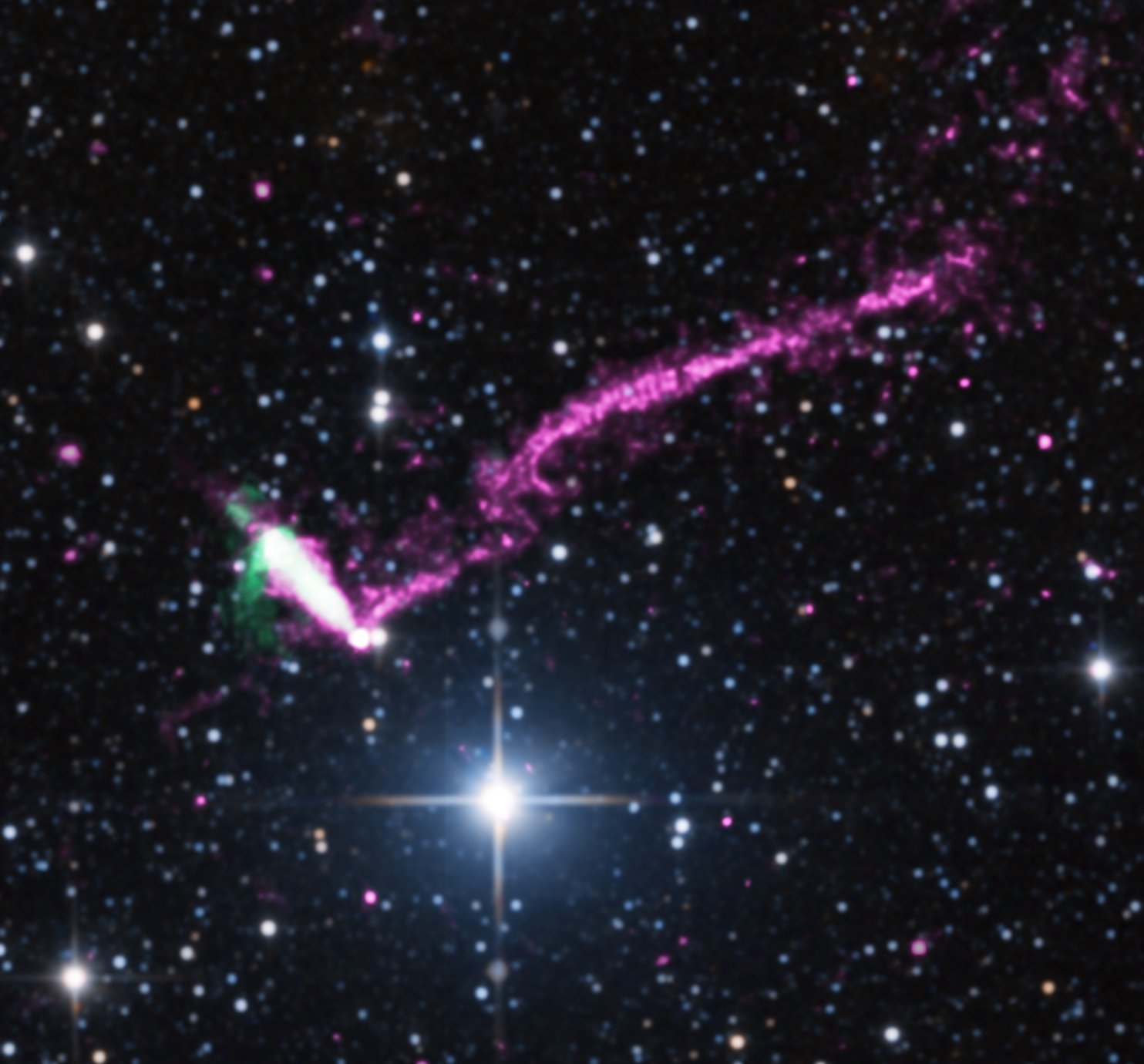Got my boa and I’m ready to go: pulsar IGR J11014-6103. Image credit: X-ray (pink): NASA/CXC/ISDC/L.Pavan et al, Radio (green): CSIRO/ATNF/ATCA Optical: 2MASS/UMass/IPAC-Caltech/NASA/NSF
Like an exotic dancer trailing a feather boa, a newly studied weirdo pulsar is trailing a ‘tail’ of particles across the sky.
It’s a freakishly long tail too — ten times as long as the distance between the Sun and our nearest neighbouring star.
The tail is actually a ‘jet’ of charged particles coming out of the pulsar. Other pulsars have jets, but none as extreme as this one.
And the pulsar is travelling at supersonic speed — more than 1000 kilometres a second. (That would get you from Sydney to Perth in three seconds.)
This is the first pulsar known that both travels so fast and produces a jet.
To cap it all off, this fast-paced freak is cocooned in a nest of high-energy particles, a so-called ‘pulsar wind nebula’.
Again, other pulsars have ‘wind nebulae’. But usually they are aligned with the pulsar’s jet (where there is a jet). In this object the wind nebula, and the pulsar’s direction of travel, are almost at right angles to the pulsar’s jet.
All this weirdness has been uncovered by an international team studying the pulsar — called IGR J11014-6103 — with our Compact Array telescope and NASA’s Chandra X-ray space telescope.
Originally discovered with the European Space Agency satellite INTEGRAL, the pulsar is located about 60 light-years away from the centre of the supernova remnant SNR MSH 11-61A in the constellation of Carina.
Its bizarre characteristics are almost certainly due to the way it was formed, from the collapse and subsequent explosion of a massive star, but they are hard to explain with current models.
Publication
L. Pavan et al. The long helical jet of the Lighthouse nebula, IGR J11014-6103. Astronomy & Astrophysics, Volume 562, February 2014: online 18 February. Preprint


